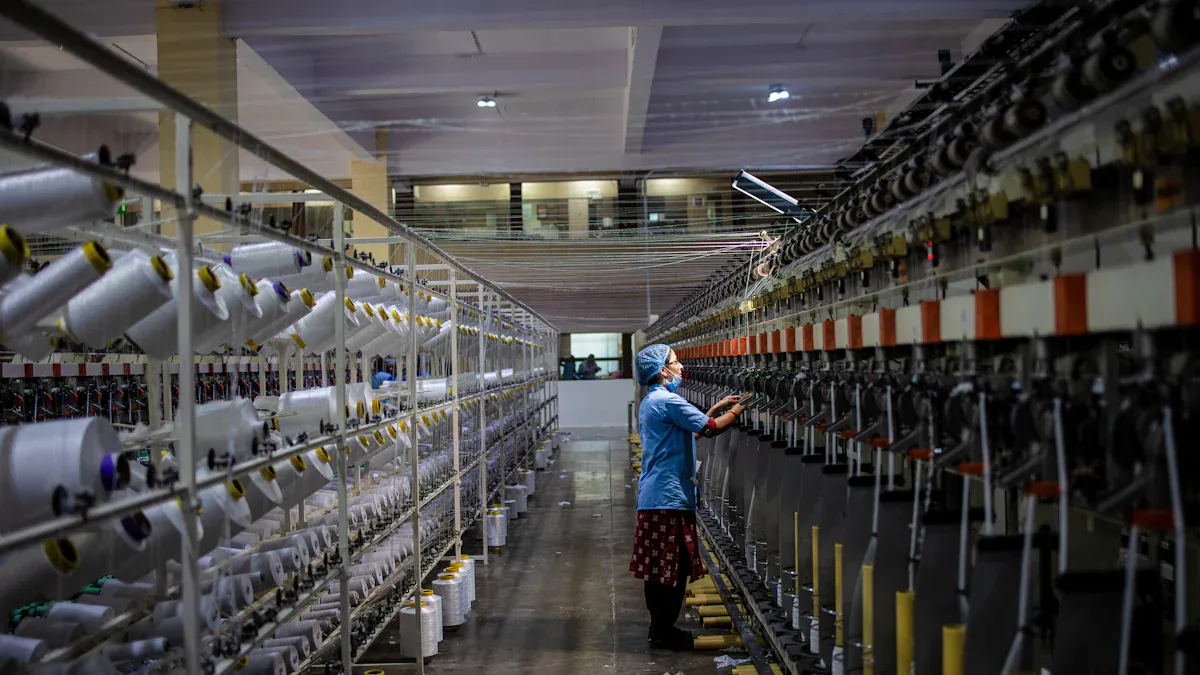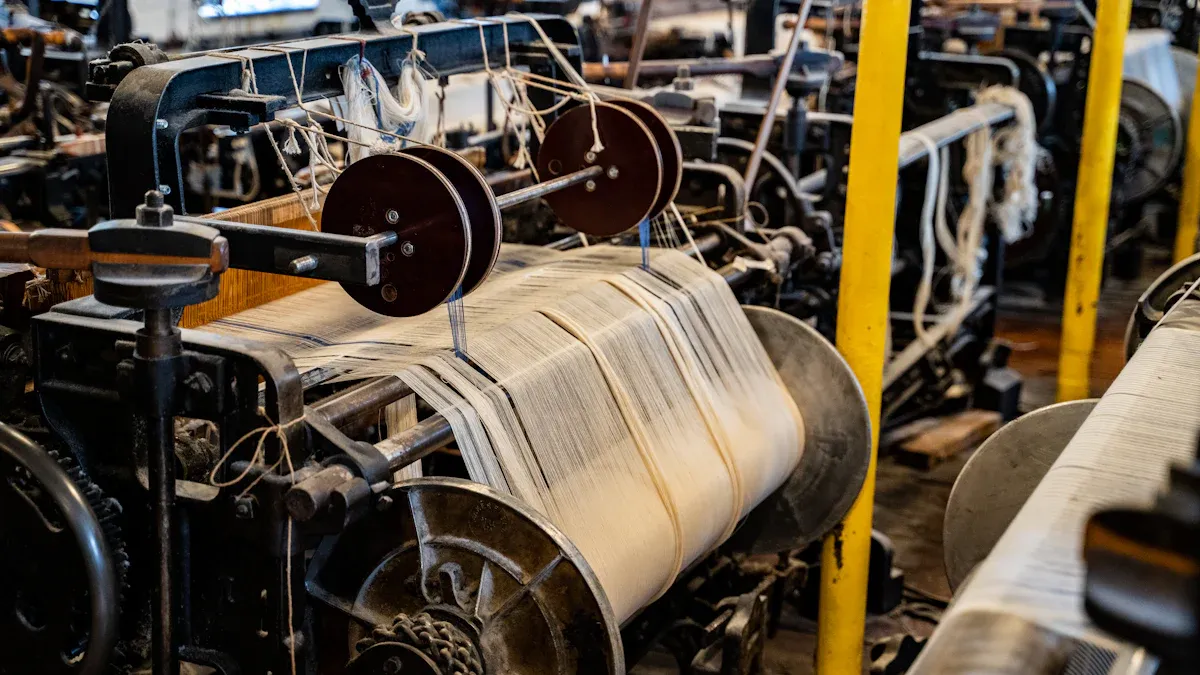
Innovations in false-twist machines are redefining textile production in 2025, driving efficiency, precision, and sustainability. These advancements include enhanced automation and AI integration, energy-efficient designs, advanced material compatibility, real-time monitoring with predictive maintenance, and modular, compact configurations.
The demand for automation and real-time monitoring stems from the need for zero-fault production and improved scheduling in weaving and knitting units. Sustainability goals further emphasize energy-efficient and low-vibration machines. Compatibility with high-tenacity fibers supports technical textiles, while modularity boosts scalability in modern mills.
These breakthroughs promise transformative impacts on textile operations, ensuring higher throughput and superior quality.
Key Takeaways
- AI in false-twist machines makes work faster and cuts waste.
- Energy-saving designs reduce costs and help the environment.
- Modular machines can change easily for different tasks, adding flexibility.
- IoT sensors check quality live and prevent delays with smart fixes.
- Better materials handling allows use of strong fibers for more uses.
Enhanced Automation and AI Integration

AI-Driven Features in False-Twist Machines
The integration of artificial intelligence into false-twist machines has revolutionized textile manufacturing. AI-driven systems now enable machines to self-optimize by analyzing real-time data from embedded sensors. These systems adjust operational parameters dynamically, ensuring consistent yarn quality and reducing waste. Industry 4.0 technologies, such as real-time analytics, have further enhanced operational visibility. This has minimized machine downtime and allowed predictive maintenance, which extends equipment lifespan and boosts productivity.
AI also facilitates in-line quality monitoring, where deviations in yarn properties are detected instantly. This capability eliminates the need for manual inspections, streamlining production workflows. By leveraging these advancements, manufacturers can achieve zero-fault production, a critical requirement in high-demand textile markets.
Benefits of Automation for Precision and Productivity
Automation in false-twist machines has delivered measurable benefits across multiple dimensions. Advanced automation techniques have improved process precision, ensuring uniformity in yarn twisting and texturing. Servo drive technologies, a key component of modern automation, have significantly enhanced energy efficiency. These innovations not only reduce operational costs but also align with sustainability goals.
The table below highlights some of the key advantages observed with AI-driven automation:
| Benefit Type | Description |
|---|---|
| Energy Efficiency | Significant gains achieved through the adoption of servo drive technologies. |
| Process Precision | Enhanced precision in operations due to advanced automation techniques. |
| Operational Responsiveness | Real-time adjustments based on in-line quality feedback enabled by AI. |
By automating repetitive tasks, false-twist machines have also improved operational responsiveness. AI systems make real-time adjustments based on quality feedback, ensuring optimal performance. These advancements have transformed the textile industry, enabling manufacturers to meet growing demands with greater efficiency and reliability.
Energy Efficiency and Sustainability

Energy-Saving Designs in False-Twist Machines
Energy efficiency has become a cornerstone of innovation in false-twist machines. Modern designs now incorporate advanced automation and digital controls, which optimize energy usage during operation. These systems ensure that machines only consume the energy necessary for specific tasks, significantly reducing waste. Additionally, manufacturers have adopted energy-efficient technologies, such as servo motors and low-friction components, to further enhance performance while minimizing power consumption.
Regulatory pressures have also driven the development of energy-saving designs. Governments and industry bodies worldwide are enforcing stricter regulations to reduce carbon footprints in manufacturing. This has encouraged manufacturers to prioritize sustainable practices, including the integration of renewable energy sources into production facilities. The table below highlights key trends influencing energy efficiency in false-twist machine manufacturing:
| Trend/Factor | Description |
|---|---|
| Energy-efficient technologies | Adoption of technologies that reduce energy consumption in manufacturing processes. |
| Regulatory pressures | Increased regulations pushing manufacturers towards sustainable practices. |
| Advanced automation and digital controls | Integration of automation that enhances operational efficiency and reduces energy usage. |
These advancements not only align with global sustainability goals but also provide long-term cost savings for manufacturers.
Contribution to Sustainability Goals
False-twist machines play a pivotal role in achieving sustainability objectives within the textile industry. Manufacturers are increasingly adopting environmentally friendly practices, such as using sustainable materials and minimizing waste during production. These efforts align with global initiatives to combat climate change and reduce industrial emissions.
Balancing sustainability with cost-effectiveness remains a challenge. However, the integration of energy-efficient designs and automation has made it possible to achieve both. By reducing energy consumption and optimizing resource utilization, these machines contribute to a more sustainable production process. Furthermore, their compatibility with renewable energy systems ensures that textile manufacturers can meet their sustainability targets without compromising operational efficiency.
Post time: May-29-2025
 Phone: +8613567545633
Phone: +8613567545633 E-mail: lanxiangmachine@foxmail.com
E-mail: lanxiangmachine@foxmail.com 